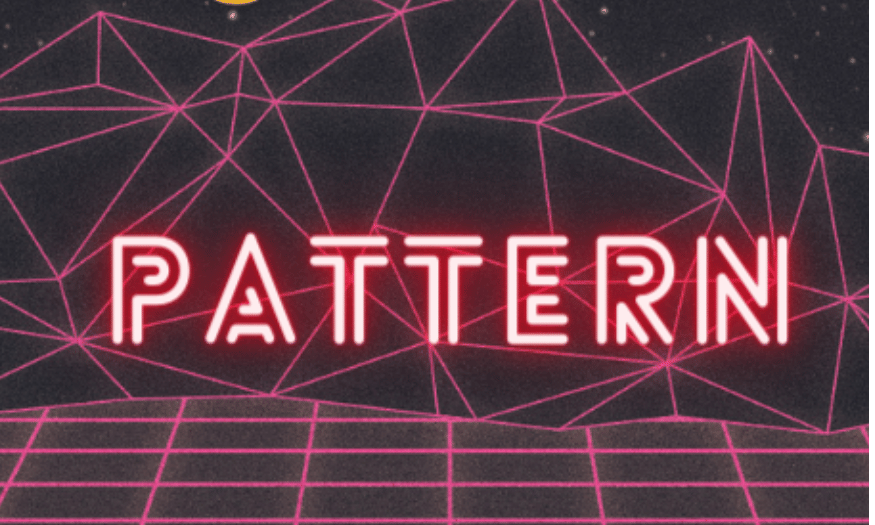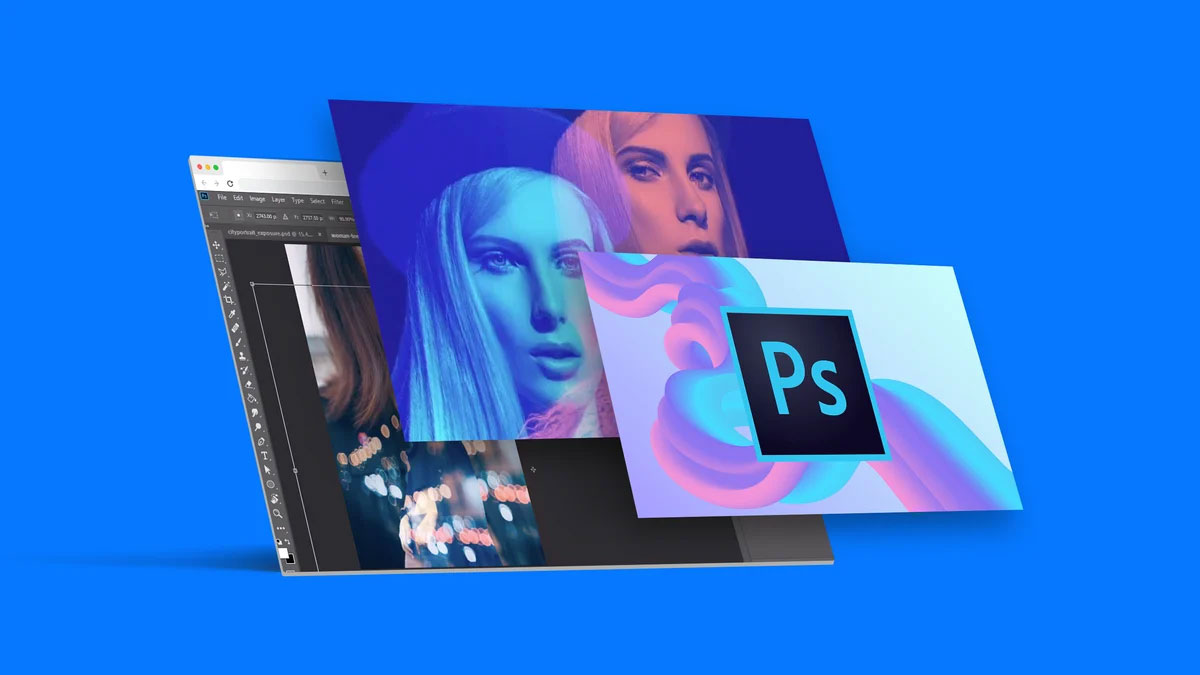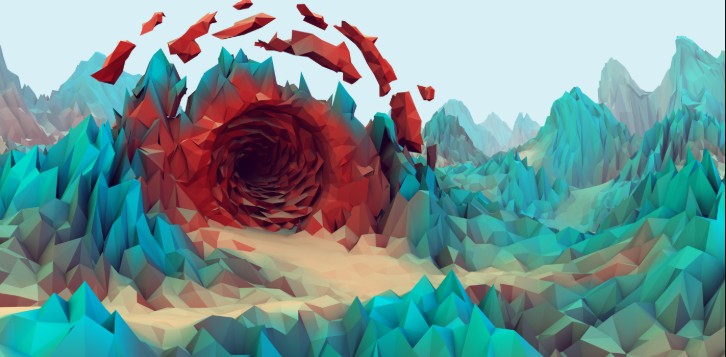Best Selling Products
What is a Pattern? Common Types of Patterns in Design
Nội dung
- 1. Pattern Definition
- 2. Application of Pattern
- 2.1 Fashion
- 2.2 Interior design
- 2.3 Brand identity
- 2.4 Graphic design
- 2.5 Photography
- 3. Common Patterns in Design
- 3.1 Geometric pattern
- 3.2 Abstract pattern
- 3.3 Modern pattern
- 3.4 Minimalist pattern
- 3.5 Natural patterns
- 3.6 Watercolor pattern
- 3.7 Character pattern template
- 3.8 Illustration and animation patterns
- 3.9 Classical pattern
- 4. Perfect Pattern Creation Tool: Photoshop
- 5. Conclusion
In the world of design, the concept of "pattern" is not simply images or decorative motifs. Patterns play an important role in creating harmony, consistency and appeal in design products. From graphics, fashion to architecture, different types of patterns are used to convey messages, create emotions and improve user experience. In this article, Sadesign will explore with you more deeply what "pattern" is, as well as common types of patterns in design, helping you better understand their importance and applications in practice.

In the world of design, the concept of "pattern" is not simply images or decorative motifs. Patterns play an important role in creating harmony, consistency and appeal in design products. From graphics, fashion to architecture, different types of patterns are used to convey messages, create emotions and improve user experience. In this article, Sadesign will explore with you more deeply what "pattern" is, as well as common types of patterns in design, helping you better understand their importance and applications in practice.
1. Pattern Definition
The word “pattern” is derived from “patron,” which first appeared between 1325 and 1375, meaning “one who provides or supports financially.” By the 16th century, the second syllable of the word had changed, making “pattern” a standalone concept, referring to a decorative motif that is repeated over and over again. In the field of design, patterns are not simply images, but a combination of multiple elements arranged and repeated, forming a harmonious and seamless composition.
Patterns have proven their powerful influence not only in design but also in everyday life. Their high visual impact makes it easy for us to notice the presence of patterns in familiar objects around us, from clothing, product packaging to architectural spaces. The diversity and flexibility of patterns make them an essential tool in attracting attention and creating engaging experiences for users.
.png)
2. Application of Pattern
2.1 Fashion
In the fashion industry, patterns are not only a decorative element, but also a symbol of the wearer's style and personality. A prominent example is Burberry's check pattern, which has become a symbol of luxury and elegance. These patterns not only make the outfit stand out, but also help designers express their creativity and innovation in each collection. Combining many different patterns when coordinating clothes has become a trend, giving the wearer the freedom to express themselves while maintaining harmony.
Not only limited to clothes, patterns also appear in accessories such as handbags, shoes, and even jewelry. This diversity not only creates eye-catching outfits but also makes the wearer feel more confident. Thanks to the richness of patterns, the fashion industry is always full of vitality and constantly developing, opening up many opportunities for creativity.
2.2 Interior design
In the field of interior design, patterns play an important role in creating impressive and inspiring living spaces. Take a look around your home: from wallpaper, ceramic tiles to carved details, all bear the mark of unique motifs. Each pattern not only brings a different feeling but also represents a distinct design style, from classic to modern.
If you are looking to refresh your living space, choosing wallpaper or wall paint with patterns will be a great choice. These patterns not only create highlights but also help the room become more lively. A space decorated with suitable patterns will bring a feeling of comfort and warmth, creating an ideal home for every family.
2.3 Brand identity
In today’s competitive world, a unique brand identity is essential to attract customers. Patterns are a powerful tool for brands to assert their own identity. Using distinctive motifs not only creates a strong impression but also helps customers easily recognize the brand immediately.
A successful brand often knows how to harmoniously incorporate patterns into its logo design, product packaging and advertising materials. This not only adds aesthetic value but also creates a consistent, memorable image in the minds of consumers. Creativity in applying patterns will help the brand stand out from the myriad of choices on the market.
.png)
2.4 Graphic design
In graphic design, patterns are considered an indispensable element to create impressive visual products. Not only do they have the ability to create strong visual effects, patterns also help convey the content and emotions of messages without having to use a lot of text. Unique motifs can attract viewers and make them feel the message more strongly.
Designers often use patterns to create backgrounds, highlight images or create focal points in the layout. The skillful selection and coordination of patterns will help the design work become more vivid and attractive, bringing a great experience to the viewer. Graphic design with patterns is not only a creative work but also an art of visual communication.
2.5 Photography
In photography, patterns are everywhere, from images in nature to man-made urban structures like buildings and sidewalks. Recognizing and using patterns effectively can help photographers create unique and eye-catching photos. When combined with elements like composition, lighting, and angle, patterns can create images that are more impressive than ever.
Using patterns not only highlights the subject but also creates depth and richness in the image. Repeating lines and shapes can lead the viewer’s eye, creating a compelling visual story. Therefore, patterns are not only a part of photography but also a powerful expressive language, helping to convey emotions and meanings to the viewer.
3. Common Patterns in Design
Here are some unique patterns and their applications so you can better understand where and when to use them.
3.1 Geometric pattern
Geometric patterns use basic shapes such as triangles, rectangles, hexagons, circles, and diamonds. These shapes are combined and repeated in a cohesive way, creating interesting and engaging compositions. Rather than simply being static images, these geometric patterns create movement and rhythm, bringing the design to life.
When applied, geometric patterns are often used in web graphics, product packaging, and even fashion. They not only create an accent but can also bring a modern and professional feel. Combining geometric patterns with bright colors can add appeal, drawing the viewer’s eye to important elements in the design.
3.2 Abstract pattern
Abstract patterns often bring an artistic feel and stimulate the viewer’s imagination. Instead of using specific images, these patterns use shapes and colors freely, creating unique and modern works. This allows the designer to express unlimited creativity, while creating space for imagination to run wild.
However, when using abstract patterns, it is important to pay attention to the layout and balance of the design. If not careful, these patterns can make the layout look cluttered and difficult to see. Make sure that other elements in the design can highlight or accentuate these abstract patterns, thereby creating a harmonious and attractive whole.
3.3 Modern pattern
Inspired by the Art Deco movement of the early 20th century, modern patterns often combine simple geometric shapes with bright colors. The repeating structures of symmetrical shapes create a unique visual world, making the design stand out and memorable. These patterns are not only beautiful to look at, but can also convey strong emotions to the viewer.
When applied in design, modern patterns are often used for website backgrounds, product packaging or as decorative motifs. They have the ability to attract attention naturally, while creating a youthful and dynamic atmosphere. The perfection in every detail and color of these patterns helps to enhance the value of the product, making it more attractive in the eyes of customers.
.png)
3.4 Minimalist pattern
Minimalist patterns often focus on using negative space and minimal elements to create elegance. With few colors and shapes, these patterns not only create an airy space but also bring a pleasant feeling to the viewer. White space is an important highlight, allowing the human eye to rest and make it easier to remember.
Minimalist patterns have become a popular trend in advertising design, as they help brands stand out without being too distracting. Other design elements can take center stage thanks to this minimalist background. When used correctly, minimalist patterns can create elegance and sophistication, adding value to any product.
3.5 Natural patterns
The richness and diversity of nature is always an endless source of inspiration for designers. From floral and animal motifs to natural landscapes, natural patterns bring a sense of closeness and warmth. They can convey messages of freshness, freedom and harmony with nature, making viewers feel relaxed and comfortable.
Natural patterns are often used in interior design, fashion, and product packaging. They not only create a familiar living space but also help brands recall natural and sustainable values. By using this pattern, designers can easily bring a pleasant and inspiring atmosphere to consumers.
.png)
3.6 Watercolor pattern
Watercolor patterns have become a popular trend in design, favored for their natural beauty and softness. Watercolor patterns can add a relaxing and artistic feel to any design. From digital to print ads, watercolor patterns are always fresh and unique.
When applying watercolor patterns, designers can use them as a background for logos, titles, or product images. The combination of colors and freehand strokes creates a unique style that makes the product stand out. Watercolor patterns also work well with handwritten fonts, creating an artistic and approachable design that easily attracts the viewer’s attention.
3.7 Character pattern template
Character patterns are often associated with cute cartoon characters, such as rabbits, foxes, or bears. These patterns are not only suitable for children's brands, but can also work well for playful and energetic brands such as Red Bull or Oreo. Character patterns bring life and fun to a design, making the product more relatable and approachable to consumers.
Character patterns are used in a wide range of applications, from product packaging, to flyers, to advertising materials. They not only attract the attention of children but also make a strong impression on parents. Using characters in design helps create an emotional connection, making it easier for consumers to remember the brand.
.png)
3.8 Illustration and animation patterns
Illustration and cartoon patterns have always been very attractive, especially for children. Colorful and lively illustrations not only create fun but also make products more attractive. This pattern is often used in packaging design, flyers, posters and many other types of promotional materials.
The combination of animation and illustration in the design helps create a playful space, bringing a positive feeling to the viewer. These patterns never become boring, because they can always be renewed and created in many different ways. Using illustrated patterns will help the brand stand out and easily leave an impression in the minds of customers.
3.9 Classical pattern
If you love vintage style and want to add a traditional touch to your designs, vintage patterns are the perfect choice. Vintage patterns often use a variety of shapes and rich colors, creating a luxurious and elegant beauty. Inspired by decades past, these patterns bring a nostalgic feeling, but still very modern.
In design, vintage patterns can be used for product packaging, interior decoration, or even fashion. They help create a stylish and elegant space, making any product more special. The combination of tradition and modernity in vintage patterns will bring high aesthetic value and make a strong impression on consumers.
.png)
4. Perfect Pattern Creation Tool: Photoshop
Photoshop is one of the most powerful tools for creating unique and rich patterns. With a friendly interface and many flexible features, users can easily design patterns from basic to complex. To start, you just need to create an image with the desired size, then use drawing tools, colors and effects to create your own pattern.
One of the standout features of Photoshop is the ability to save and apply patterns. Once you’ve completed your design, you can save the pattern as a preset and reuse it in other projects. You can also combine multiple layers and effects to create 3D patterns or add depth to your patterns. With Photoshop, your creativity is limitless, making it easy to create impressive patterns for any design.
5. Conclusion
In short, patterns are not just decorative images but also powerful tools in design. Understanding the types of patterns and how to use them can help designers create products that are not only beautiful but also effective in communicating with users. Whether you are working in the field of graphics, fashion or architecture, applying patterns intelligently will enhance the value of your designs, making the product stand out and more memorable to consumers. Explore and be creative with patterns to bring great experiences to users!












































